No products in the cart.
Return To Shop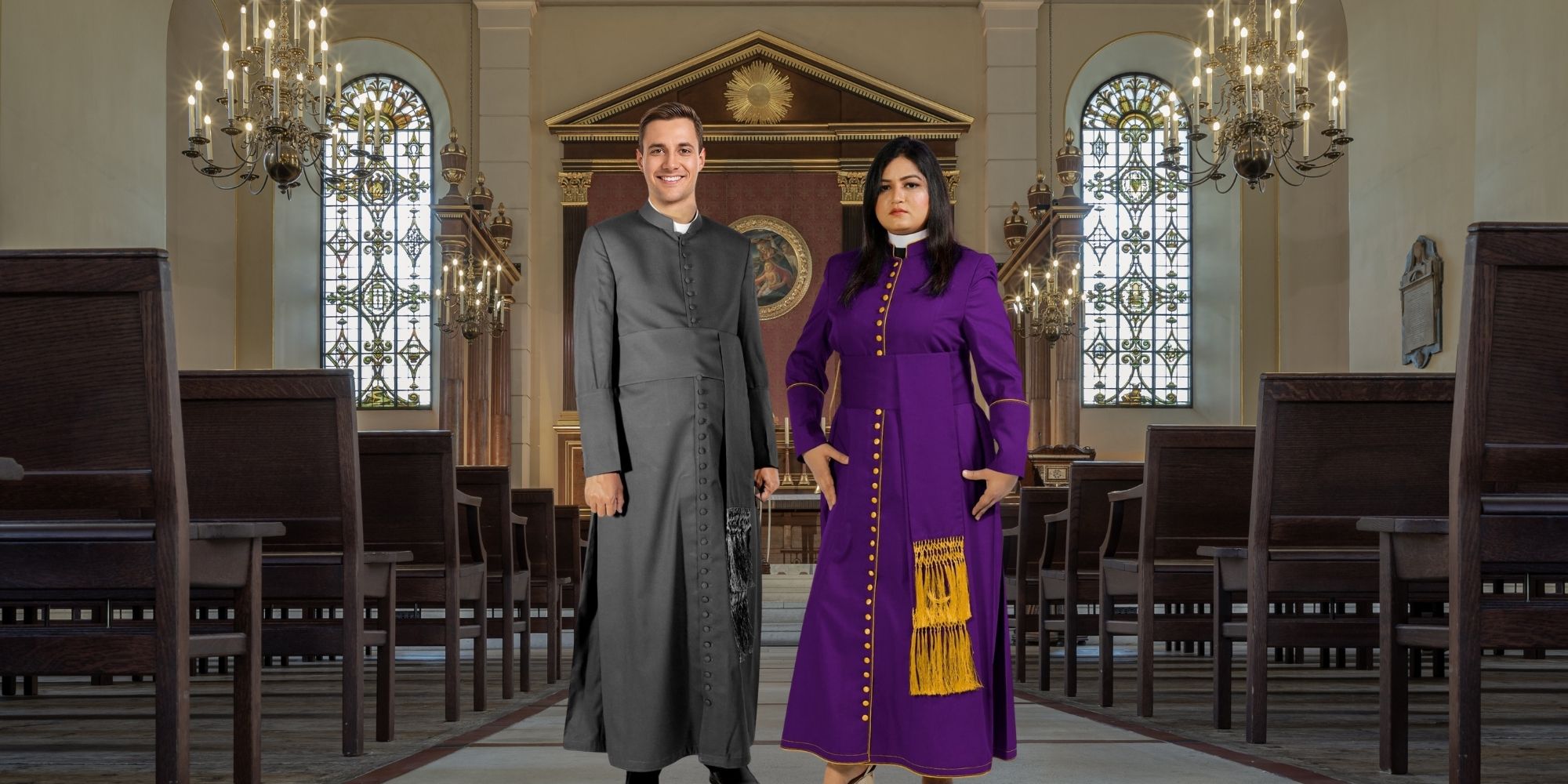
Step into any busy street and you’ll see a thousand outfits, each silently telling a story. A suit and tie whispers professionalism. A wedding gown shouts celebration. A soldier’s uniform commands respect. And when someone appears in clericals, a long cassock or a crisp collar, the message is immediate: this is clergy.
Clothing is never neutral. It frames perception, signals identity, and even shapes interactions. That’s why clergy apparel has always held such importance. Clergy robes are language of faith, service, and sacred authority.
But here’s the part many overlook: these garments are not about vanity or outdated ritual. They are tools of ministry. Whether it’s the traditional clergy cassock for men or the increasingly recognized women’s cassock, clerical clothing changes how pastors are seen, how they serve, and how communities respond to them.
This article unpacks what most people don’t realize about clerical attire, its history, symbolism, everyday impact, and evolving role for both men and women in ministry.
Why Clergy Apparel Matters
When a pastor arrives at the hospital to pray for a member in critical condition. If he enters wearing khakis and a polo, he may need to explain himself to security, sign forms, or convince nurses of his role. But if he walks in wearing a collar or cassock, the reaction is entirely different. The staff immediately steps aside, ushers him into the ward, and introduces him to the family. His clothing has already announced his purpose.
This is the invisible power of clergy apparel.
Like the uniform of a doctor or firefighter, clerical dress eliminates confusion. It establishes identity without words: this person is here to serve spiritually. For centuries, clergy have relied on this visual shorthand to minister effectively in every situation, from mass in a cathedral to bedside prayers in a hospital.
- The Clergy Cassock for Men: With its long, flowing lines, often black, it signifies humility and tradition. Worn by priests, bishops, and ministers, it connects the present with the past, reminding both clergy and laity that ministry is not about fashion but sacred calling.
- The Women’s Cassock: Though more recent in church history, it carries equal weight. By wearing a cassock, clergywomen claim visible authority, counter stereotypes, and are immediately recognized as spiritual leaders.
Clerical clothing is not self-promotion. On the contrary, it takes focus away from personal style and redirects it to the sacred office. Parishioners, patients, or strangers do not see the individual first, they see the servant of God.
That clarity matters. It prevents blurred roles, builds trust in vulnerable settings, and ensures that ministry is recognized instantly. In a world where appearances constantly shape assumptions, clerical attire provides the gift of certainty.
The Clergy Cassock for Men: History and Meaning
The clergy cassock for men is one of the most recognizable garments in church history. Dating back to the early centuries of Christianity, the cassock became standard clerical wear in the Roman Catholic Church, Orthodox traditions, and many Protestant denominations.
Traditionally, the cassock was long, buttoned, and black, symbolizing simplicity, discipline, and detachment from worldly concerns. Black, in particular, conveyed humility and a readiness for service, while variations in trim or color often indicated rank: purple for bishops, red for cardinals, and white for the Pope.
But beyond color, the cassock carried deep symbolism:
- Humility: Its plainness reminded the clergy that they were servants first.
- Continuity: By wearing what priests before them had worn, clergy connected themselves to centuries of tradition.
- Visibility: In towns and villages, the cassock marked the priest as someone available to all teacher, confessor, spiritual guide.
In modern times, some clergy wear cassocks less frequently, preferring suits or shirts with collars. Yet many continue to embrace the cassock, not out of nostalgia but because it speaks so clearly. Walking into a church, a school, or even a marketplace in cassock attire makes one’s role unmistakable.
Today, the cassock is not confined to Catholicism. Anglican, Lutheran, Orthodox, and even some Protestant clergy wear cassocks for mass, formal services, or pastoral duties. Despite cultural shifts, the garment continues to declare a timeless truth: ministry is a calling, not a fashion choice.
The Women’s Cassock: Visibility and Authority
For centuries, clerical clothing was designed with men in mind. But as women increasingly entered ministry roles, a question arose: how should clergywomen dress to reflect their sacred calling?
The women’s cassock emerged as the answer. Designed with dignity, practicality, and fit in mind, it allows female clergy to stand in continuity with tradition while claiming their rightful place in ministry.
The impact has been profound. A woman in casual clothes visiting a hospital might be mistaken for a family member or volunteer. But when she wears clericals, there is no doubt: she is clergy. That recognition changes the way patients, families, and even institutions respond.
Beyond recognition, the women’s cassock represents authority. It signals that the ministry is not bound by gender but by calling. For congregations, it eliminates confusion. For clergywomen themselves, it provides confidence and continuity with their male counterparts.
Importantly, the adoption of women’s cassocks challenges stereotypes. Where once women in ministry were invisible, now they are immediately identified as spiritual leaders. In moments of prayer, preaching, or sacraments, the clothing affirms their role just as powerfully as words.
Beyond Tradition: The Hidden Advantages of Clergy Apparel
To outsiders, clerical clothing may seem outdated or ceremonial. But those who wear it know the very practical advantages:
- Instant Recognition – Clergy don’t need to explain who they are. The outfit says it all.
- Authority with Compassion – A collar or cassock commands respect, but not intimidation. It signals service, not power.
- Boundary Setting – Parishioners understand their pastor is not just a friend but a spiritual leader. This protects both sides.
- Everyday Access – From hospitals to prisons, clerics often gain access others cannot, simply because their clothing identifies their role.
- Visible Theology – The outfit itself becomes a sermon, reminding clergy and community alike that ministry is sacred, set apart, and available.
For both men and women, the cassock is not about drawing attention but about pointing attention toward God. It is a uniform of humility that paradoxically carries immense authority.
Clergy Apparel in Culture and Media
Even in films and television, costume designers understand the power of clerical attire. A priest in a collar immediately signals faith, authority, or ritual. Directors often use these visual cues to shape how audiences perceive a character:
- A corrupt priest may wear flashy suits.
- A humble pastor appears in a simple cassock.
- A wedding or funeral scene almost always features clergy in vestments.
This cultural shorthand shows just how deeply clergy apparel has entered the collective imagination. Whether respected, critiqued, or caricatured, clerical clothing always communicates something.
In real life, clergy can use this recognition to their advantage. The same visibility that makes a priest recognizable on-screen also makes them accessible in airports, coffee shops, or community events. People approach them for prayer, advice, or conversation, opportunities that might never arise if they blended into the crowd.
Conclusion:
What most people don’t know about clergy apparel is that it is never about fashion, it’s about function. These garments serve clergy and community alike by making ministry visible, accessible, and respected. The clergy cassock for men anchors ministry in tradition, humility, and continuity. The women’s cassock ensures visibility, authority, and equality in sacred service. Together, they represent a living theology: clergy are not simply individuals but servants marked by their calling.
In a world full of noise, clerical clothing still speaks with clarity. It says: Here is someone set apart to serve, pray, and walk with you in faith. And that is a message worth wearing.
Frequently Asked Question (FAQs)
Why Should Clergy Wear Clericals?
Clericals are a visible sign of ministry. When a priest or minister wears clergy apparel, the community immediately recognizes them as spiritual leaders. This visibility builds trust, authority, and accessibility. It also helps clergy step into their sacred role with focus, distinguishing the person from the office they hold.
What is the purpose of a cassock?
The cassock serves both symbolic and practical roles. Symbolically, it reflects humility, discipline, and continuity with the long history of the church. Practically, it sets clergy apart, provides instant recognition, and reminds both clergy and laity of the sacred responsibilities tied to the ministry.
Who can wear a clergy robe?
Clergy robes are reserved for ordained ministers, priests, pastors, and in some traditions, deacons. However, certain forms of church vestments may also be worn by choir members, acolytes, or lay ministers depending on the denomination. In all cases, the clergy robe signifies a particular role of service in worship.
What does the cassock symbolize?
The cassock symbolizes humility, separation from worldly distractions, and dedication to service. Its traditional black color represents simplicity and death to self, while variations in trim or sash reflect clerical rank or office.
What does a female priest wear?
A female priest may wear a women’s cassock, clergy shirts with collars, or tailored clerical robes designed specifically for women. These garments affirm her ordained role while providing the same visibility, dignity, and continuity that men’s clerical wear communicates.

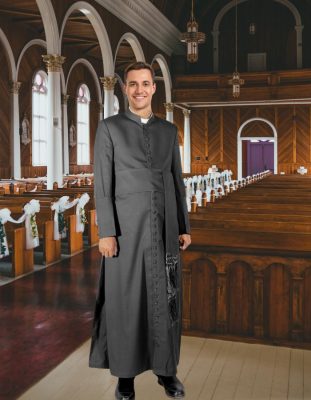
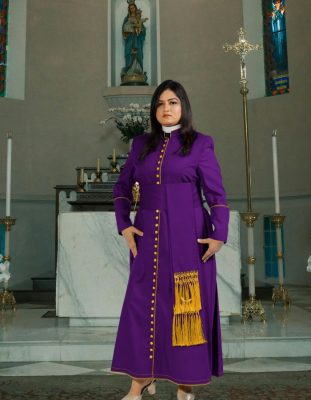
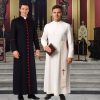

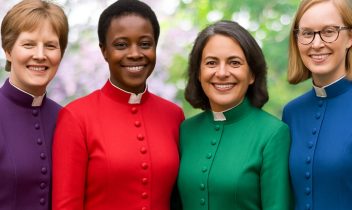
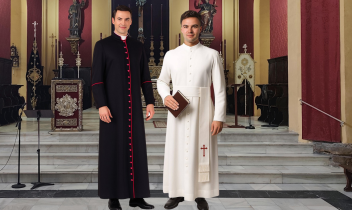
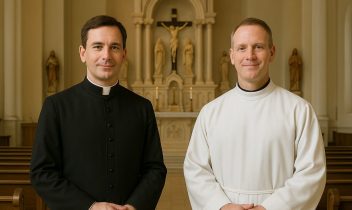
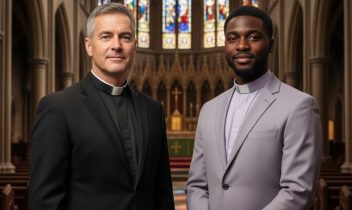
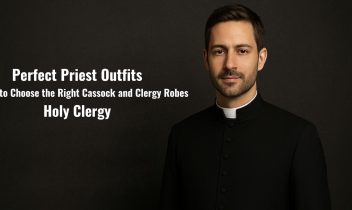
Recent Comments